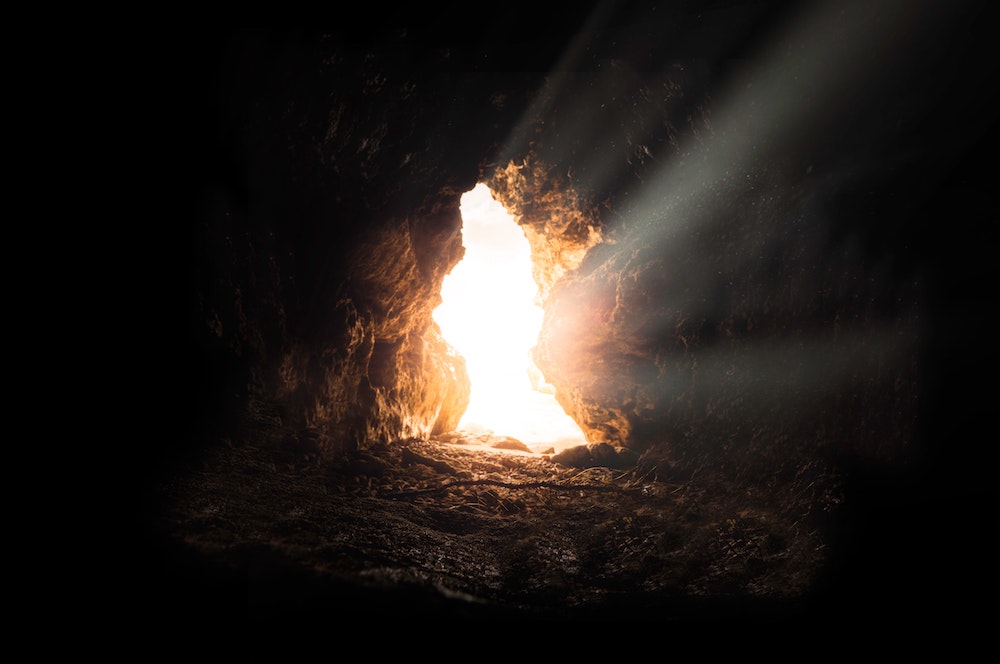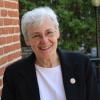
(Unsplash/Bruno Van der Kraan)
The Easter Sunday Gospel is, at best, a half-story. Hearing it is like listening to a 4-year-old report on his day: lots of details, little plot and not much of a conclusion.
Mary went to Jesus' tomb and found it empty. She ran and told two others. They all raced back. When Peter and the other, the "beloved" disciple, entered the tomb, all they saw were the empty swaddling cloths of death: another tragic discovery of nothing. Just to guarantee that we remain confused, the Gospel solemnly assures us that one of the disciples "believed, for they did not yet understand the Scripture."
Listening to this should leave us shaking our heads, asking, "What's the point?" If the evangelist were a child telling this story at Easter dinner, we might press him a little. "Johnny, you forgot to tell us what the disciple believed. If he believed, why did you say, 'It's because they didn't understand?' " At this point, Maggie, Johnny's big sister, might explain with some exasperation: "This is like a chapter book. You have to know what went before and keep going!"
If Maggie would continue telling this story, she would say that after the guys left, Mary got thoroughly turned around in the garden. Maggie would explain that in the turning, Mary finally recognized the Risen Lord who told her that she couldn't cling to the past. With that, prescient little Maggie would wag her head and say, "See, that's what the disciple believed!" At this point, most adults would nod, thank the children and pass the bread and butter.
Too often, we listen to this story without paying enough attention to the questions John tries to provoke. We gloss over inconsistencies because the words of the creed explain it all with clear logic. But if we have gotten this far in the Gospel of John, we know that logic is not John's strong suit and nothing is as it first appears. John deals in mystery, luring us into narratives with layers upon layers of meaning. He leads us into ever-deeper questions.
If we journey with Mary on this Easter morn, like her, we must allow ourselves to go into the night. When Mary set out on that first day of the week, darkness covered the Earth. She was going to dignify the death of her faith that God's love would overcome evil. The events of the past week had shattered her hope. It was a time to mourn.
Then, tragedy turned to confusion. Mary was robbed even of the chance to grieve in peace. It was more than she could deal with alone. She ran back to the community, to Simon Peter, the crushed rock, and the nameless, beloved disciple. Oddly, they too ran to the vacant tomb. Why the hurry? Why race toward emptiness?
That's where the disciples actually succeeded. They were, as Jesus had called them, people of little faith. That little gave them something to grow on. Being with Jesus had put cracks in their certainties. He had been more than they could grasp; they never really understood him. In the end, they failed him. But he had also drawn them into becoming more than they had ever imagined they could be. He had led them beyond logic and law. He had introduced them to mystery — to a kind of glory they had experienced but didn't really understand.
The one thing that the beloved disciple understood completely was that he didn't understand. Peter eventually got that message too. If they could say nothing more than, "I don't understand," they could stop overestimating the power of evil. Then they could begin to be grasped by the mystery of the Scriptures, the message that God's love is never overcome.
Advertisement
John tells us this confusing Easter morning story to crack open our certainties — our logic and law — and to assure us that it's OK to be confused, broken-hearted, afraid and ready to bury all hope. John is teaching that we're not going to understand the resurrection until we fully face the tragedy of the evil that seems powerful enough to break us.
The story of the first Easter morning is one of sadness overshadowed by confusion. What the three disciples had in common was that they didn't flee from tragedy or mystery. They were people of little faith; their faith was just strong enough to allow them to distrust their own verdict that this was the last chapter of their story with Jesus. Remembering what went before, they kept going.
What was yet to come eventually made sense of everything that went before it. The disciples recognized the Risen Lord when they realized that just as they had died with him, they also rose with him. It's blessedly confusing and more than a story. It's a mystery.
[St. Joseph Sr. Mary M. McGlone is currently serving on the congregational leadership team of the Sisters of St. Joseph of Carondelet.]
